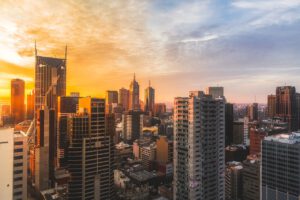5 Top-Rated Tourist Attractions in Istanbul

Istanbul has been sought after by numerous empires throughout the centuries. It is a great metropolis that straddles Europe and Asia. Established around 1000 BC, Byzantium, the colony, became Constantinople’s capital under the Byzantine Empire. The Ottoman conquest kept Istanbul in its place as the heart and soul of their empire. Istanbul was officially renamed Istanbul in honor of the founding of Turkey’s Republic. There are many beautiful remnants of Istanbul’s long and proud history that can be seen here.
There are many other attractions to be explored, including the four major ones (Aya Sofya Topkapi Pala, Topkapi palace, Blue Mosque, Grand Bazaar) There are many tourist attractions located in the old city area of Sultanahmet. But there are so many more things to do in the surrounding areas. This list contains the best tourist attractions in Istanbul.
1. Aya Sofya
It is said that Justinian, Byzantine Emperor, entered his finished church in AD 536. He cried out “Glory To God that I have been found worthy of such a work.” Solomon, you have outdone me! The Aya Sophia, formerly known as the Hagia Sophia, was the emperor’s braggadocious declaration to the world about his wealth and technical capabilities. The official center of all things was, according to tradition, the area surrounding the emperor’s throne within a church.
From its conversion to an Ottoman mosque in Constantinople to its later conversion into a museum, the Aya Sofya remains one of Istanbul’s most beloved landmarks.
2. Topkapi Palace (Topkapi Sarayi)
Mehmet Conqueror built this magnificent palace near the Bosphorus in 15th century. This palace was the place where the Ottoman Empire sultans ruled their territories until the 19th. The complex features an impressive display of Islamic art. There are many courtyards decorated with intricate hand-painted tiles, and a multitude of rooms richly decorated. They are all connected by towers and battlemented walls.
One of the most famous highlights is the Harem. This is where the sultan’s concubines and children lived. The Second Court allows you to walk through the huge Palace Kitchens and admire the magnificent interior of Imperial Council Chamber. The Third Court was the home to the sultan.
The Third Court has an impressive collection of relics belonging to Prophet Muhammad in its Sacred Safekeeping Room. It is also home to the Imperial Treasury where you’ll be greeted with a variety of gold objects and precious gemstones that will make the eyes water. Topkapi Palace is best seen in half a day.
3. Blue Mosque (Sultan Ahmet Camii)
This magnificent mosque was Sultan Ahmet I’s monumental architectural gift for his capital. It is also commonly known today as the Blue Mosque. Built between 1609-1616, the mosque caused controversy throughout the Muslim World because it had six minarets. This is the same number of the Great Mosque of Mecca. Mecca received a seventh Minaret in order to end the dissent.
The nickname of the mosque comes from its interior decoration with tens or thousands of Iznik Tiles. The interior of the mosque is one the finest examples of Ottoman architecture. A wonderful way to experience Istanbul’s unique architecture is to wander among the gardens that are sandwiched between two of the most famous landmarks, the Blue Mosque or the Aya Sofya. This allows you to view their respective domes in all their glory. Extra ambience is available when you visit Istanbul at night, when the Blue Mosque’s minaret rings out with the call to prayer.
Just behind the Blue Mosque lies the Arasta Bazaar. It’s a great stop for shopping, with the high-quality souvenir shops selling here. Even if you don’t want to browse the museum, visit the Great Palace Mosaic Museum which is located between the Arasta Bazaar (the mosque) and the mosque. The museum contains a 250-meter-squared fragment of mosaic pavement that was found here in the 1950s. Extensive information panels provide excellent explanations of the recovery and subsequent rescue of the mosaic floor.
4. Basilica Cistern (Yerebatan Sarniçi)
The Basilica Cistern is one Istanbul’s most remarkable tourist attractions. The massive, palace-like underground hall was once home to the imperial water supply of the Byzantine Emperors. It is supported by 336 columns in 12 row. Constantine the Great began the project but Emperor Justinian finished it in the sixth century.
Many of these columns were reused from classical structures, and some have decorative carvings. These are most well-known for their Medusa stones located in the northwest corner. They have Medusa head carvings. This place is beautiful with its soft, steady stream of water. It’s very atmospheric.
5. Hippodrome
Septimius Severus, in AD 203, started the ancient Hippodrome. Constantine The Great completed it in AD 332. This was the hub of Byzantine public and civic life. It was home to splendid games, chariot races and also a scene for factional conflicts. Today, you can’t see much of Hippodrome, save for a small part of the galleries on its southern side. But the At Meydani park, which is located on the same site, is home to many monuments.
A fountain can be found on the northwest corner. This was given to the Ottoman ruler by the German Emperor William II 1898. Next, three monuments of ancient importance are found in the southwest: the 20-meter-high Egyptian obelisk (from Heliopolis), the Serpent Column, brought here by Constantine from Delphi; and a stone-obelisk that was originally covered with gold-covered bronze plating before being stolen by the soldiers on the 4th Crusade.
[tp_widget][/tp_widget]
Abhijeet Johri



